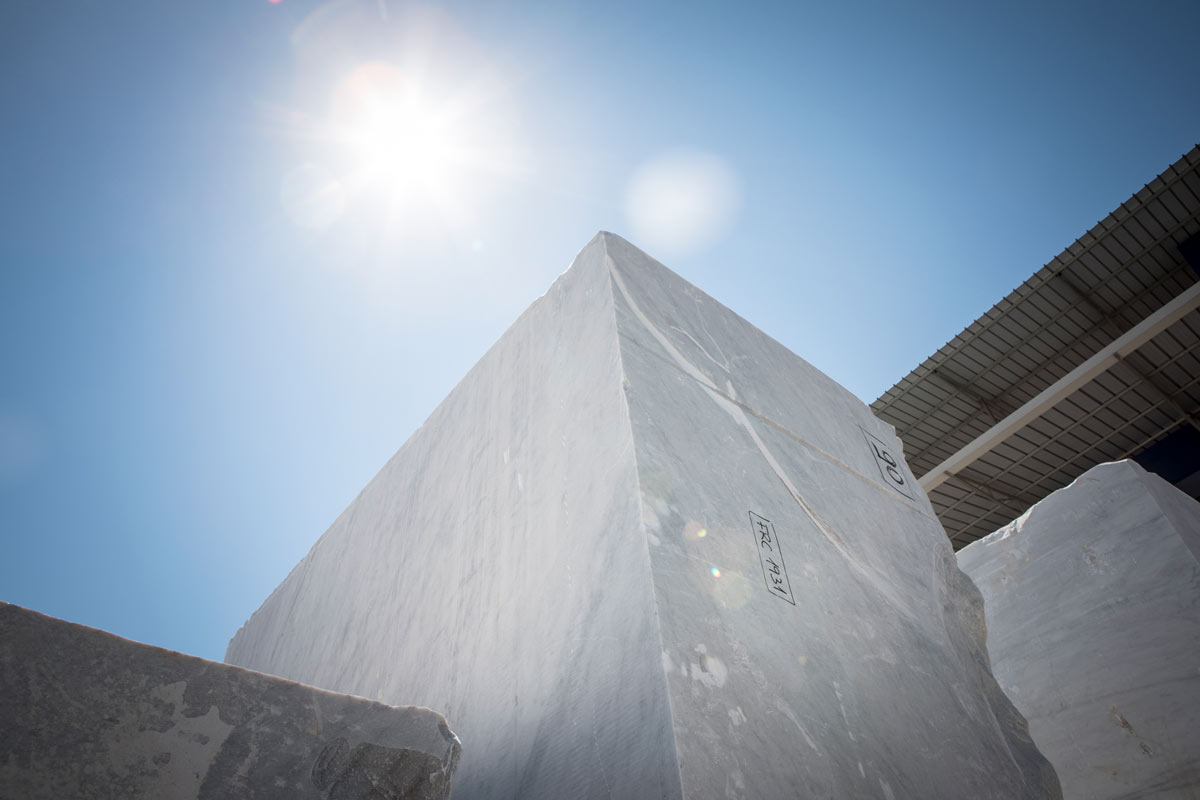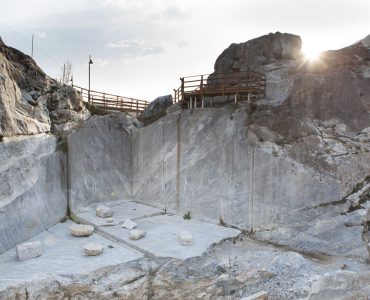Marble: composition and origin of the name
Scientifically, marble is a carbonate rock which originated from metamorphic genesis: that means it is born from the transformation of a pre-existing rock, whose composition and structure underwent changes over the time caused by the intervention of different chemical and physical factors. Specifically, the Apuan marble is the result of the transformation of limestone sediments or limestone composites, which, due to pressure and temperature variations, mutated their organization and composition turning into the white rock with a granular structure (with a “saccharoid texture”, to use a scientific term) which we know today as “marble”.
As anticipated, marble is a carbonate rock, that is to say it is mainly based on carbonate (it must have at least 50% of carbonates): Carrara marble contains, on average, about 98% of calcium carbonate, together with small percentage of silica, magnesia, dolomite and residue. The veins, stains and colours of the marble are due to the presence of impurities (such as iron oxide, sand or clay) which alter the natural white colour of the pure marble.
The term “marble” (marmor in Latin, mármaron in Greek) derives from the Greek verb marmáirein, which means “to shine”, “to sparkle”: thus, the word refers to the appearance of the rock, appreciated since ancient times for its whiteness, purity and shininess.





